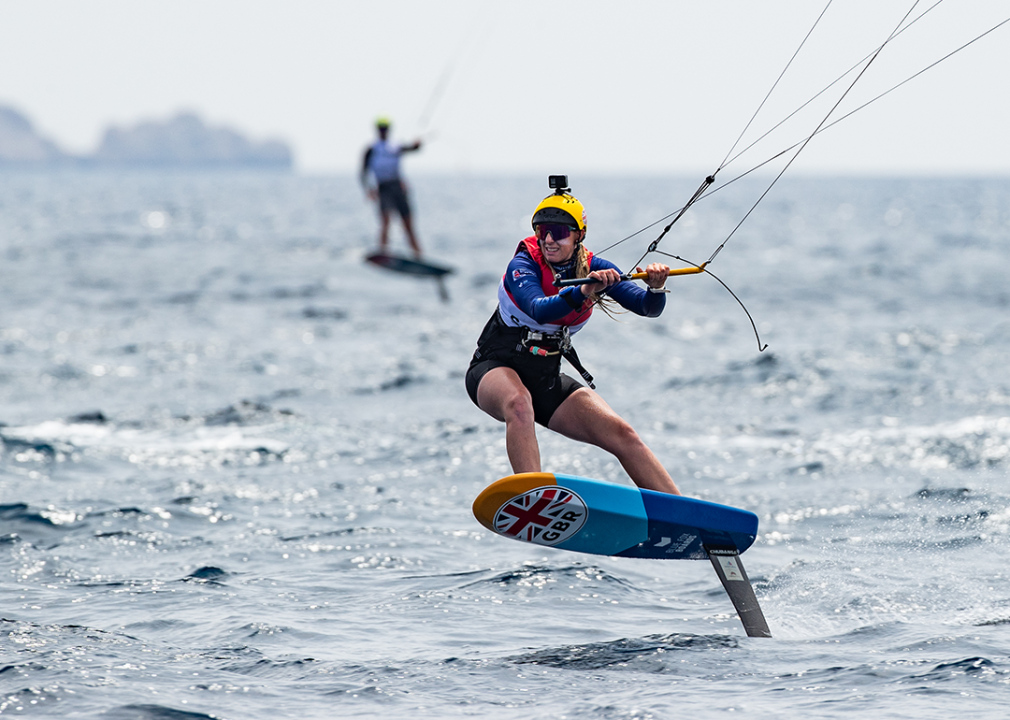Ryan Pierse // Getty Images You’re used to seeing track and field, gymnastics, and swimming at the Summer Olympics, but did you know breakdancing is now an Olympic sport? Stacker examined the new sports and events coming to the 2024 Paris Olympics. Many sports vie to be in the Olympics for greater visibility and to fuel participation. The International Olympic Committee’s revenue-sharing model doesn’t hurt either–after the 2020 Tokyo Summer Olympics, the IOC distributed nearly $523 million to the international federations governing the sports in the Olympic program. Though many sports try, getting onto the Olympic program is a complex process that can take years. There are two elements of the Olympic sports program: The initial program consists of the core sports you see at every Games and hosts city-selected sports. To be considered for Olympic inclusion, the sport must have an international federation that the IOC “recognizes.” Recognized international federations have participation from a wide range of countries and continents, a world championship, and abide by many rules, including those against doping and competition manipulation. Recognized status does not guarantee Olympic inclusion–chess, billiards, and cheerleading are all IOC-recognized sports but have yet to be in the Olympics. IOC membership votes on the initial sports program about seven years before an Olympics occurs. Once a sport is on this list, it’s almost permanently put on the program, although that’s not always the case. Host cities may also add sports to the program–with IOC approval–to make their Olympics unique. Host cities make their selections using a framework of 35 considerations, including the number of athletes, appeal to youth, costs, and local popularity. The number of new sports can vary–the 2020 Tokyo Olympics had five new sports. Paris kept new sports like skateboarding, sport climbing, and surfing and added one new sport to the mix. Sports may also change their events from Olympic year to Olympic year to modernize them, appeal to younger generations, and provide more opportunities for women. In Tokyo, basketball added a 3×3 event, giving urban half-court play an Olympic platform. In Paris, you’ll also see several new events that will change up the Games. Breaking Pauline Ballet // Getty Images The one new sport for Paris 2024, breaking (or breakdancing), originated in the 1970s with the emergence of hip-hop culture in the United States. While some consider it more of an art form embedded in the culture, a competitive version evolved as a sport. The World DanceSport Federation took breaking under its wing in its quest to get competitive dance in the Olympics. The IOC included it in the program at the 2018 Youth Olympic Games, where it got more and more attention. Seeking a Games with a youthful, urban feel, Paris nominated it for the sports program. The competition in Paris will feature men’s and women’s events with 16 B-boys and B-girls each. They’ll compete in a head-to-head battle of three one-minute rounds where competitors throw down their moves. Judges look for the best physicality, creativity, and personal style because they compare dancers against each other rather than against a set of execution metrics like in gymnastics routines. Look for American B-girl Sunny Choi, Japan’s B-boy Shigekix and B-girl Ami, and Canada’s B-Boy Phil Wizard to spin up some moves in the competition. Men in artistic swimming Quinn Rooney // Getty Images When artistic swimming–formerly known as synchronized swimming–was introduced to the Olympics in 1984, it was a sport for women only. However, men had participated in the sport as far back as the 1940s but were eventually pushed out as universities looked for ways to offer women’s sports to adhere to Title IX requirements. While men still competed at lower levels of the sport, World Aquatics, the sport’s governing body, only welcomed them to the world championships in 2015. In 2022, it announced that men could compete at the Olympics. At the Olympics, men will only be allowed to compete in the team event–the duet will remain women-only, and they can only take up to two slots on the eight-person team. Not every team is expected to have men, but Italy’s team may include Giorgio Minisini, the first man to compete in a team at a senior-level event. The U.S. may feature 45-year-old Bill May, a pioneer and activist for male inclusion in the sport. Marathon race walk mixed relay Christian Petersen/Getty Images for World Athletics As the IOC pushes for more gender equality, many sports have added mixed relay events to give women more medal opportunities. In track and field–also called athletics–women racewalkers have historically experienced a lot of disparity. Race walking was first included in the 1908 London Games as a men’s event. Meanwhile, women didn’t get an Olympic event until 2000, the 20-kilometer. After the 2020 Summer Olympics, World Athletics opted to remove the men’s 50-kilometer race not only because it deemed shorter distances more marketable but also to make room for a mixed relay event to give both men and women an opportunity to win two medals. The event will pit 22 teams of two who will each walk two legs of the relay to complete 42.195 kilometers, the marathon length. Although the event is designed to promote gender equality, men will still walk farther–they’ll do legs of 12.195 and 10 kilometers, while women will complete two 10-kilometer legs. Kayak cross
The new sports and events you'll see at the 2024 Paris Olympics















